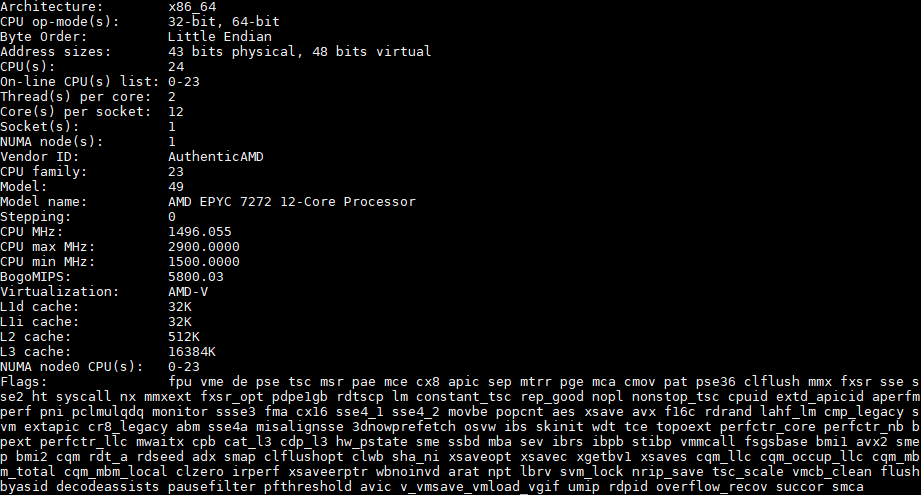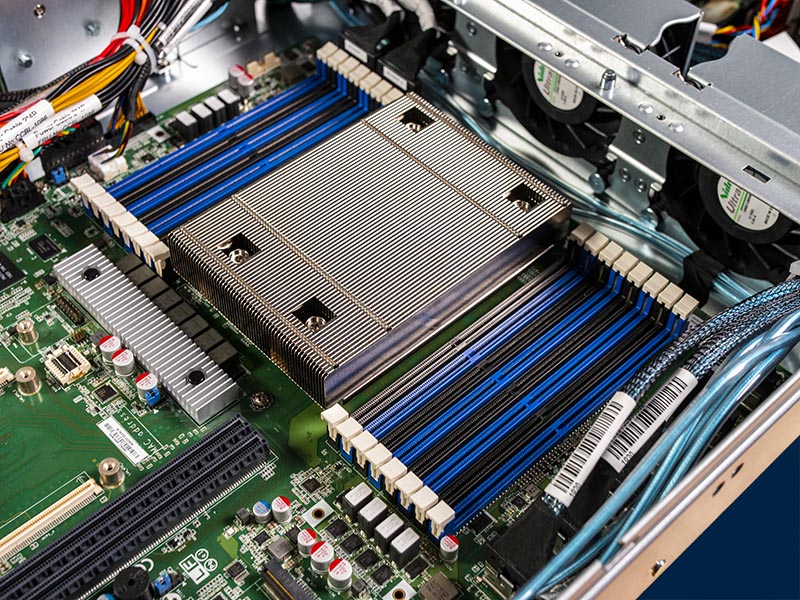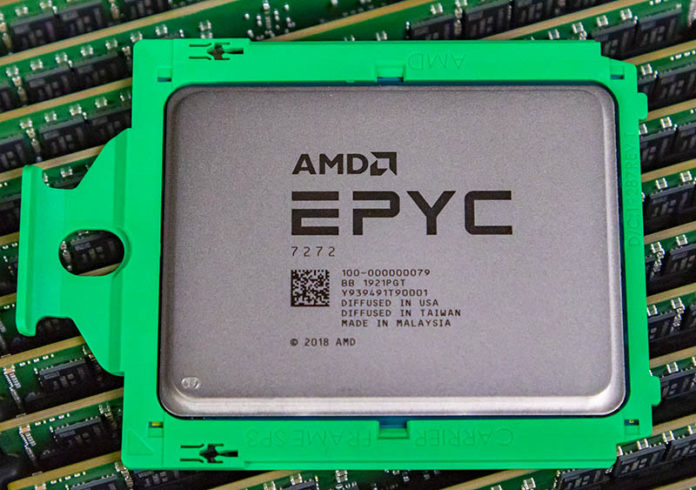The AMD EPYC 7272 is frankly a fascinating processor. It is a 12 core 120W TDP part which makes it one of the lower core count parts and lower TDP parts in the EPYC lineup. Many organizations are looking to AMD EPYC 7002 series systems for their large expansion footprint, but they may prioritize PCIe lanes over compute performance. For these roles, as well as providing a platform for lower-cost systems, the AMD EPYC 7272 is something completely different than what we see at the higher-end of the AMD stack, and what Intel offers.
Key stats for the AMD EPYC 7272: 12 cores / 24 threads with a 2.9GHz base clock and 3.2GHz turbo boost. There is 64MB of onboard L3 cache. The CPU features a 120W TDP. These are $625 list price parts.
Here is what the lscpu output looks like for an AMD EPYC 7272:

One will immediately notice that there is only 64MB of L3 cache. This is far less than higher-end models such as the AMD EPYC 7742 which can have up to 256MB of L3 cache. Still, if one compares this to Intel’s 12-core offering, the Xeon Silver 4214, this is significantly more at 64MB versus 16.5MB. From a competitive standpoint, this is still a lot of L3 cache at this core count and is derived from how AMD constructs “Rome” chips.
These parts also offer something completely different on the memory front. The EPYC 7272 has eight-channel memory with the capability to use two DIMMs per channel. This means one can use sixteen DIMMs with the processors. Unlike the higher-end models, this is a “4-channel memory-optimized” SKU. That means it has eight channels of memory but can feed four channels worth to the CPUs. You can read more about this in our AMD EPYC 7002 Rome CPUs with Half Memory Bandwidth, or watch the video below.
For lower-cost systems, one can populate four or fewer DIMMs and still get solid performance. In the segment of the EPYC 7272, that means one can configure RAM more as they did in the Xeon E5-2600 V4 generation and see lower total system costs. The impact in certain applications such as some high-performance computing workloads and in-memory databases tends to be significant, bringing the parts down to Xeon levels of performance, however, in general-purpose workloads, this has relatively little impact.
Test Configuration
For our test platform, we are using the Tyan Transport SX TS65A-B8036.
- Platform: Tyan Transport SX TS65A-B8036
- CPU: AMD EPYC 7272
- RAM: 8x 32GB Micron DDR4-3200 RDIMMs
- OS SSD: 400GB Intel DC S3700
- Data SSD: 960GB Intel Optane 905P
You are going to see more about this platform, but this is a PCIe Gen4 single-socket platform from Tyan that has 16x front U.2 NVMe bays, 10x front SATA/ SAS bays, two rear 2.5″ SATA OS SSD bays, six expansion slots on risers and an OCP mezzanine slot. All this is achieved using a single AMD EPYC 7002 series CPU.

If you count the PCIe lanes and bandwidth in the platform, Tyan is offering more PCIe I/O than a dual-socket Xeon server in a single socket AMD EPYC 7002 server. This lower-cost CPU is able to power this enormous platform.
Also, one may read that you cannot use Optane with AMD EPYC. While it is true that you cannot use the Intel Optane DCPMMs with AMD EPYC, you can use their standard NVMe form factor. Intel Optane NVMe SSDs are excellent for database applications as an example when paired with EPYC.
A Word on Power Consumption
We tested these in a number of configurations. Here is what we found using the AMD EPYC 7272 in this configuration when we pushed the sliders all the way to performance mode:
- Idle Power (Performance Mode): 107W
- STH 70% Load: 203W
- STH 100% Load: 245W
- Maximum Observed Power (Performance Mode): 302W
This is not an enormous power burden on a rack even with 12 cores. In many systems built around these CPUs, the peripherals such as SSDs, accelerators, and NICs will use more power than the CPUs.
Next, let us look at our performance benchmarks before getting to market positioning and our final words.





Seem like the 7282 is a way better deal than the 7272. 4 more cores, same TDP, relatively cheaper (7272 – $$693.76 on NewEgg, 7282 – $715.99 on NewEgg).
Will C – Our 1P 7282 testing is complete. That should be the next EPYC “Rome” piece in the pipeline.
Patrick, thanks for the hard work. Looking forward to it.
You need to add some thread limited benchmark to your test suite. Far from all workloads scale well over two digit number of threads. On the other hand, single core performance is not very useful either for server applications. I would say a 4 thread benchmark would give us very useful information.
Many of us are asking the question if EPYC will beat Intel for applications bottlenecked to a handful cores single thread throughput.
If none of your benchmarks show that EPYC 7762, which is the high frequency optimized 155W part, beats the 120W EPYC 7272 for anything, there is something wrong with the benchmark suite.